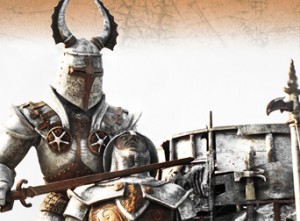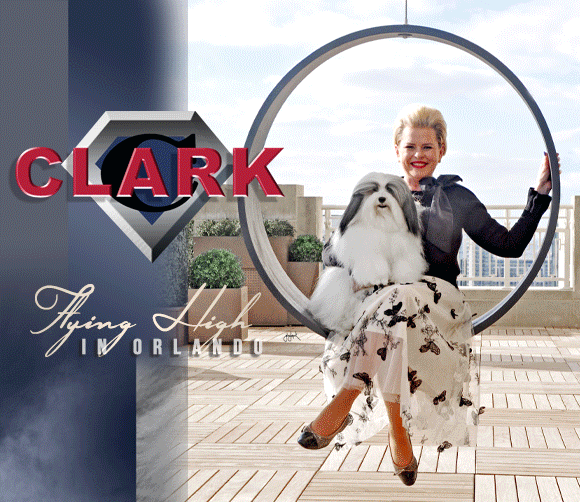From The CC Vault: Hereditary Legacies
By Dr. Gareth Morgan-Jones
 On occasion it is surely an appropriate and salutary exercise for us, as connoisseurs and self-appointed guardians of the pedigreed dog, to reflect upon the prevailing condition of our animals from a long-term and multidimensional perspective. The aim in doing so may be viewed as potentially remedial and possibly even curative. Or it may be considered merely as a means of reassuring ourselves that we remain on the right track, so to speak. A periodic review of the state of things in this regard is always an useful undertaking if only to satisfy ourselves that all is more or less well. In all of this we have to be objective, honest and rational. How well are we preserving those characteristics which are deemed typical of each breed? How well are we protecting the ongoing health and overall well-being of our pure-bred dogs? How guilty are we of sometimes purposefully breeding for extremes and thereby possibly jeopardizing their welfare? Are we being held sufficiently accountable for our actions in these regards? These are some of the seminal questions doing the rounds in the culture in which we now find ourselves. Witness what is currently going on in the old country, where those who breed and exhibit dogs are under much-increased scrutiny and, thereby, in some cases, considerable duress. Some of this has, unfortunately, been absurdly capricious and highly irrational. How about counterproductive? It is no longer a world in which individuals have the freedom to do as they wish and pursue particular, personally-held, goals; it is apparently no longer a world in which mutual respect and substantive discussion, resulting in consensus building, plays a role in critical decision making.
On occasion it is surely an appropriate and salutary exercise for us, as connoisseurs and self-appointed guardians of the pedigreed dog, to reflect upon the prevailing condition of our animals from a long-term and multidimensional perspective. The aim in doing so may be viewed as potentially remedial and possibly even curative. Or it may be considered merely as a means of reassuring ourselves that we remain on the right track, so to speak. A periodic review of the state of things in this regard is always an useful undertaking if only to satisfy ourselves that all is more or less well. In all of this we have to be objective, honest and rational. How well are we preserving those characteristics which are deemed typical of each breed? How well are we protecting the ongoing health and overall well-being of our pure-bred dogs? How guilty are we of sometimes purposefully breeding for extremes and thereby possibly jeopardizing their welfare? Are we being held sufficiently accountable for our actions in these regards? These are some of the seminal questions doing the rounds in the culture in which we now find ourselves. Witness what is currently going on in the old country, where those who breed and exhibit dogs are under much-increased scrutiny and, thereby, in some cases, considerable duress. Some of this has, unfortunately, been absurdly capricious and highly irrational. How about counterproductive? It is no longer a world in which individuals have the freedom to do as they wish and pursue particular, personally-held, goals; it is apparently no longer a world in which mutual respect and substantive discussion, resulting in consensus building, plays a role in critical decision making.
In many ways the recent turn of events in the United Kingdom amounts to an abject insult to decency and reason, to the legacy of the past, to a great tradition, to a glorious history; let alone an unwarranted slap in the face to present-day breeders. Of the so-called health testing conducted earlier this year at Crufts, the word ‘ridiculous’ readily comes to mind. Might ‘idiotic’, I wonder, be too strong a word to use? Probably not! A long-established and customary pattern of belief, thought, action, and behavior has seemingly been abandoned. Cultural continuity and equanimity has been broken. An inheritance has been trodden upon. There has undoubtedly been a serious betrayal and overkill in play and this has led to predictable reactions. Moreover, it has to be said, there has been an element of that which is cursory, simplistic and superficial in what has happened. In an attempt to deliver some sort of strong message, the proverbial wheels clearly came off. Is this the way to conduct business? Is this the way to treat participants in the sport? Viewed in the light of the past, in a properly historical perspective, it certainly all seems so utterly mindless, off-the-wall and out-of-sync. Let us all hope that, ultimately, wiser, more-enlightened heads and minds will prevail and some class will return. A precious legacy is at stake! Just imagine what those pillars of their breeds, Florence Nagle or Anastasia Noble would, or might, make of it all. They could well be turning over in their graves. The times have surely changed and so has the underlying ethos. Guiding beliefs have apparently gone haywire, with lots of folks now ending up on radically different pages. Not at all good!
Whenever we attempt to meaningfully and intelligently look upon the condition of individual breeds, as reflected specifically in our show dogs, and attempt to place their present state in some sort of appropriate perspective, account has to be surely taken of hereditary legacies and genetic influences. There is a particular context in which all of this has to be viewed. One cannot reasonably divorce a breed from its past history. I have written about this previously but it has never been more relevant than presently. We desperately need some substantive, in-depth thinking here. It cannot all be about knee-jerk, short-sighted reacting to some prevailing outside sentiment. Setting about to purposefully find eye blemishes isn’t exactly what we should be doing. This surely is not what it should be all about. What does that achieve? For a start our breeds, as we know them today, and their man-induced evolutionary history are, in a sense, in many instances, a cauldron of complexities. Certainly there are problems but let us keep everything in proper perspective. Selections have been made over many years with particular purposes in mind and one cannot easily, necessarily and summarily undo that which has been genetically consolidated over time, over very many years. You cannot revert to a prior form overnight. It’s not at all that simple; far from it! Take, for instance, the critical role which the phenomenon of prepotency has traditionally played in the breeding of pedigreed dogs.
Historically, the directions which breeds have taken have in large part been dictated by the genetic influence of certain important dogs noted for their ability to consistently transmit particular characteristics to their offspring. A certain cumulative force has always played a significant role in breed development and refinement. The intrinsic value of this capacity has long been recognized among the responsible breeders who have moved breeds forward by selection, and kept them healthy whilst refining their form through the years. Hence the consolidation which invariably accompanies the frequent and intelligent use of such sires. In fact, as I suggested in an article published in this magazine some time ago, it is probably true to say that the present-day condition of many, if not most, of our breeds is a direct result of the influence, in each respective case, of a relatively small number of prepotent dogs. I am referring here, of course, to dogs bred specifically for purposes of competing in conformation competition where ‘type’, in all of its aspects, is paramount. They have served to anchor breeds and exercise some stability in what otherwise has inevitably been a sort of drift. These are the dogs which have countervailed, have exerted a force against that phenomenon which we sometimes refer to as breed ‘drag’; that peculiar biological tendency to revert to a prior state. Without the great producers, the hereditary pillars, where would each of our breeds be today? I’m including Basset Hounds, Clumber Spaniels, and Pekingese (of which I have a much beloved thirteen-year-old at my feet as I write this) here! So now where are we with all of this? Are we to throw out this cumulative hereditary legacy because of the false notion doing the rounds that these breeds are currently ‘unhealthy’? Where is the sense in all of this, pray tell?
One of the fundamental truths about breeding pedigreed dogs is that not all animals are necessarily created equal in terms of their ability to transmit to their offspring those virtues and characteristics which are deemed worthy of perpetuation. This has always been seemingly something of a hit and miss activity, which is why prepotency becomes such a valuable commodity if and when it occurs and is recognized by the astute breeder. Hence the increased importance of sires that can consistently transfer to their progeny a certain level of quality which can perpetuate on through the generations. This is all about consolidation and continuity. So what happens when some such animal is declared unhealthy by one veterinarian or other, and unworthy of even competing because of corneal scarring due to a past injury? How ridiculous is this? Excellence in a breed is oftentimes a direct reflection of the dominating prepotency of a highly limited number of ancestors whilst it stands relatively unaffected and unimpacted by many of the dogs bred and exhibited over the course of decades. This is how the history of the purebred dog had progressed. In other words, the legacy is rarely broadly based but is dependent upon the genetic contribution made by the few rather than the many. The procreation of offspring which can be considered above average is the province of the great producers and they are comparatively few in number at any one time. Every breeder of consequence surely knows this. If we look at this in a historical context, breed by breed, we readily see plenty of evidence that development has been advanced, and increased quality has been subsequently sustained by numerically small numbers of exceptionally prepotent dogs. Hand in hand with the influencing capacity of the dogs themselves has been the acuity and perspicacity of the breeders who have, over the years, recognized potential and made very good use of it.
So where am I going with all of this? An attempt is, of course, being made herein to put this business of dog health evaluation in appropriate context. We are all very concerned with maintaining the well-being of pedigreed dogs. In this country the Codes of Ethics of our parent clubs require that this be given paramount attention and rightly so. No one can doubt the commitment of our breeders in this regard. There is clearly a very real danger out there, however, that people lose perspective and thereby risk throwing away that which we have inherited from the activity of generations upon generations of conscientious breeders. As I say, a certain legacy is potentially jeopardized. The worst part of the Crufts debacle was the horrid lack of respect on the part of those in authority and the considerable insult which was rendered a number of individuals of stature (particularly judges) within the sport. You talk about a lack of sensitivity. To what purpose? Was anything achieved? To safeguard the health and well-being of purebred dogs, ostensibly. The scripted, platitudinous justification which was offered seemed at the time an insult to one’s intelligence. Was this a case of an entrenched bureaucracy gone recklessly berserk and ostentatiously showboating? The Kennel Club certainly succeeded in generating much disgust and overt condemnation. But then The Canine Alliance got on its case. It will be interesting to see where things go from here.
Short URL: https://caninechronicle.com/?p=255737
Comments are closed












